A) calcite
B) pyrite
C) marble
D) shells
E) limestone
Correct Answer

verified
Correct Answer
verified
Multiple Choice
Which of the following rock photographs depicts a felsic igneous rock?
A) ![]()
B) ![]()
C) ![]()
D) ![]()
Correct Answer

verified
Correct Answer
verified
Multiple Choice
A commonly pinkish mineral with light-colored wavy lines is
A) quartz.
B) potassium feldspar.
C) pyroxene.
D) amphibole.
E) olivine.
Correct Answer

verified
Correct Answer
verified
Multiple Choice
Coarsely crystalline igneous textures indicate that
A) there was a lot of gas in the magma.
B) the rock cooled quickly.
C) the rock broke apart as it flowed.
D) the rock cooled slowly.
E) the ash and pumice were hot and became compacted.
Correct Answer

verified
Correct Answer
verified
Multiple Choice
The principle of original horizontality means that sedimentary rocks have not been
A) folded.
B) lithified.
C) eroded.
D) metamorphosed.
Correct Answer

verified
Correct Answer
verified
Multiple Choice
Which of the following is a typical way in which shale is expressed in the landscape?
A) soft slopes covered by small, loose chips
B) slopes covered by loose debris from overlying rocks
C) valleys and other low areas carved into the landscape
D) badlands
E) All of these.
Correct Answer

verified
Correct Answer
verified
Multiple Choice
This figure shows the geologic timescale.Which period listed below would be part of the Paleozoic? 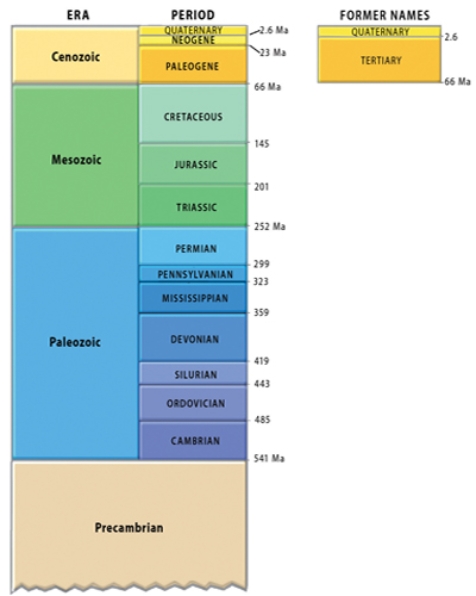
A) Permian
B) Pennsylvanian
C) Mississippian
D) Cambrian
E) All of these.
Correct Answer

verified
Correct Answer
verified
Multiple Choice
This wind-blown dust deposit (loess) from Tibet 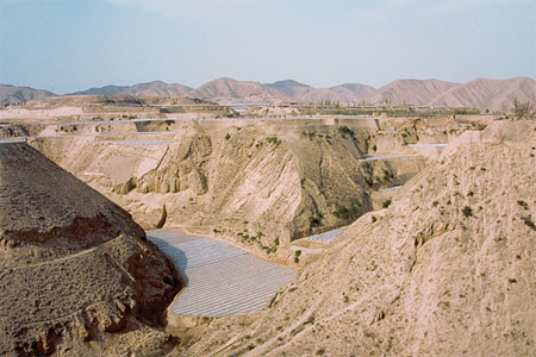
A) was deposited by a huge flood of seawater that covered the land at the time of the dinosaurs.
B) began as clay and silt that were produced by grinding of rocks along ice-age glaciers.
C) forms a world-wide layer associated with a well-known extinction of dinosaurs.
D) All of these.
Correct Answer

verified
Correct Answer
verified
Multiple Choice
The principle used to determine the age of rocks by ordering them from oldest on the bottom to the youngest on the top is called the principle of
A) superposition.
B) cross-cutting.
C) inclusions.
D) unconformities.
Correct Answer

verified
Correct Answer
verified
Multiple Choice
The term half life represents the time it takes
A) to dissolve half of the atoms in the lattice.
B) for the parent atoms to decay into atoms half their original size.
C) for half of the parent atoms to decay into daughter atoms.
D) for the Sun to decrease its size by 50 percent.
Correct Answer

verified
Correct Answer
verified
Multiple Choice
Which of the following is true of metamorphic landscapes?
A) They commonly have a shiny appearance, if their minerals reflect light.
B) They commonly have platy, jagged outcrops.
C) They are often found near granite and other igneous rocks.
D) All of these.
Correct Answer

verified
Correct Answer
verified
Multiple Choice
Which of the following locations would form a hydrothermal rock? 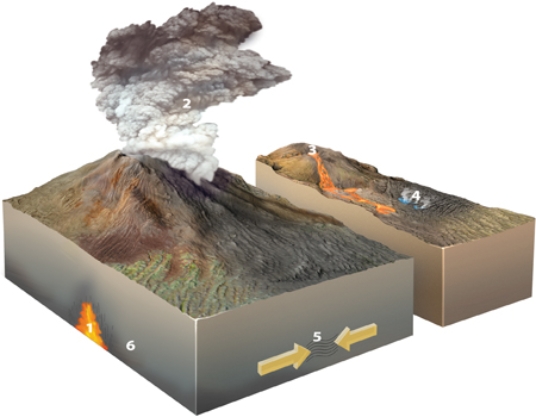
A) location 1
B) location 2
C) location 3
D) location 4
E) locations 2 and 3
Correct Answer

verified
Correct Answer
verified
Multiple Choice
The type of rock shown in this photograph is 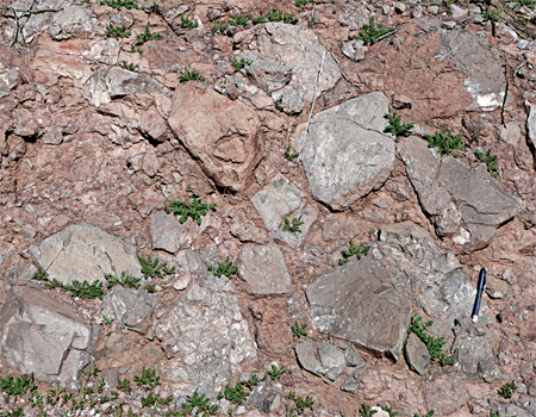
A) conglomerate.
B) breccia.
C) sandstone.
D) shale.
Correct Answer

verified
Correct Answer
verified
Multiple Choice
Which sequence of numbers reflects the order in which the layers were deposited? 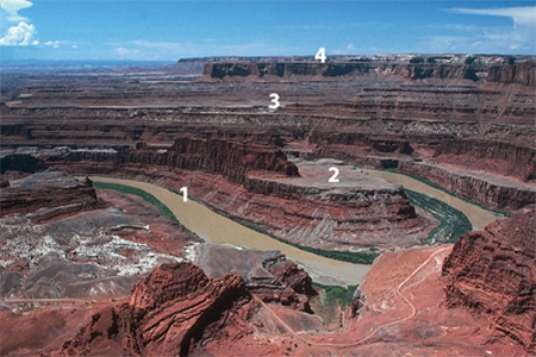
A) 1, 2, 3, 4
B) 1, 3, 4, 2
C) 4, 3, 2, 1
D) 4, 3, 1, 2
E) None of these.
Correct Answer

verified
Correct Answer
verified
Multiple Choice
Which of the following are NOT common in landscapes formed by carbonate rocks?
A) sinkholes
B) fractures widened by dissolution
C) well-defined layers (beds)
D) outcrops with pits or holes
E) All of these are common in carbonate landscapes.
Correct Answer

verified
Correct Answer
verified
Multiple Choice
The type of rock shown in this photograph is 
A) conglomerate.
B) breccia.
C) sandstone.
D) shale.
Correct Answer

verified
Correct Answer
verified
Multiple Choice
If a rock started with 1,000 atoms of a parent but now contains 250 atoms, how many half lives have passed?
A) .25 half lives
B) .5 half lives
C) 2 half lives
D) 4 half lives
E) There is no way to tell.
Correct Answer

verified
Correct Answer
verified
Multiple Choice
Which locations are composed of loose materials (not bedrock) ? 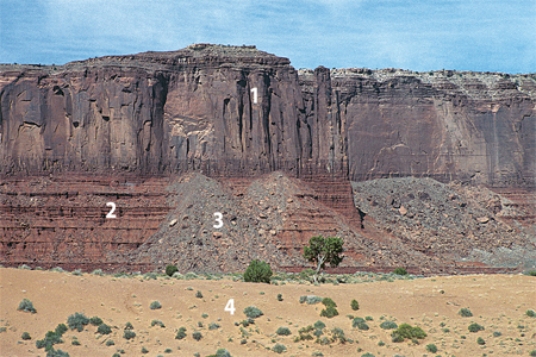
A) 1 and 2
B) 2 and 3
C) 3 and 4
D) 1 and 3
E) 2 and 4
Correct Answer

verified
Correct Answer
verified
Multiple Choice
The type of feature shown in this photograph is 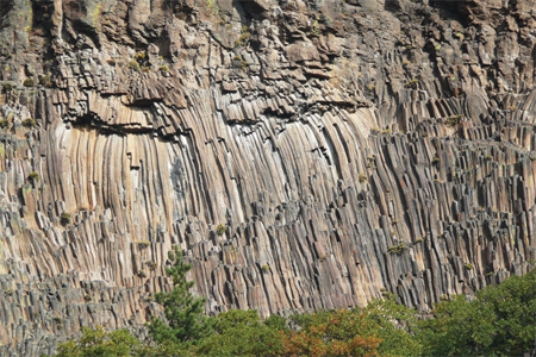
A) fault scarp.
B) columnar joints.
C) shear zone.
D) folded metamorphic rocks.
Correct Answer

verified
Correct Answer
verified
Multiple Choice
Which of the following matches a sedimentary rock with a possible metamorphic equivalent?
A) sandstone - phyllite
B) basalt - marble
C) limestone - quartzite
D) shale - slate
E) None of these.
Correct Answer

verified
Correct Answer
verified
Showing 101 - 120 of 138
Related Exams